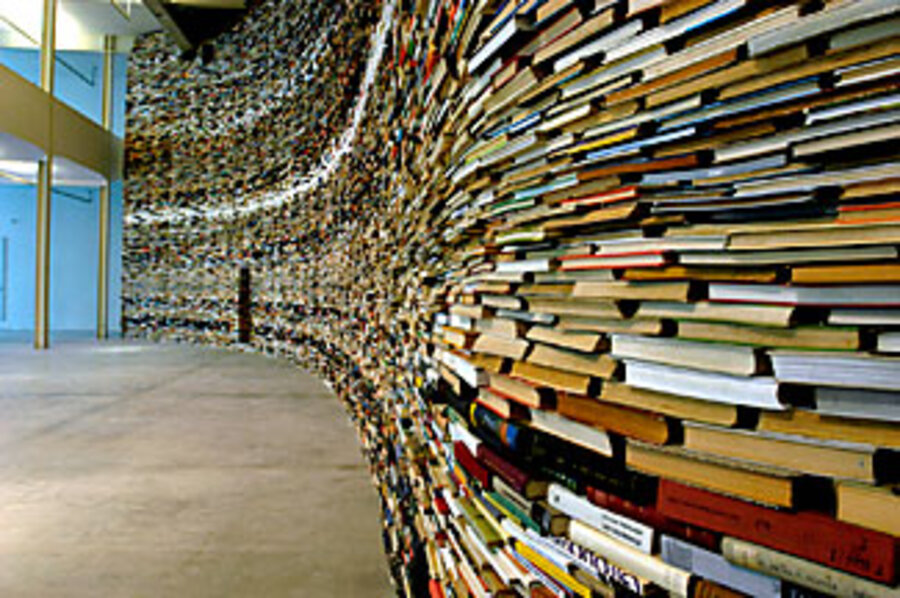Prague: A classical city takes a contemporary turn
Loading...
| Prague
Most people who've been to Prague have the same impression of the city's historical architecture and cobblestone streets: classic, romantic, timeless. You don't often hear the city described as: contemporary, cutting edge, and progressive.
Yet in the past couple of years, the art scene has been humming in quite a modern way. And the hum is getting louder with the recent opening of DOX Centre for Contemporary Art in the emerging Holešovice district.
Housed in a complex of former industrial buildings combined with new structures, the gallery is a good metaphor for the surrounding neighborhood.
"Our building is in dialogue with its neighborhood; it's a perfect example of how we deal with history and the future," says Jaroslav Andel, DOX's artistic director. "Many museums are built from scratch, and it's a problem because there's no identity with their surroundings."
DOX's home is in keeping with the gallery's mission.
"Our mission is to present artworks that explore issues in the context of today's world," says Mr. Andel.
The museum's opening exhibition "Welcome to Capitalism!" is a group show of four artists sharing their views on the topics of wealth, the economy, and the role of media in our lives.
The irony of the theme isn't lost on Andel. "We began working on it a year ago, and it turned out to be very topical," he says. "It's not political art or propaganda; it's posing questions, going further with issues related to the present day."
DOX's opening should give momentum to the still burgeoning Prague contemporary art scene (www.doxprague.org). "DOX is ambitious," Andel says. "The idea is to have momentum, more international exchange, and inspire other institutions and individuals."
One of the oldest contemporary art spaces in the city is Futura, which opened in 2003.
"There's not a lot of contemporary art here [in Prague]," says Ondrej Stupal, project manager for Futura. "But we want to promote Czech contemporary art and make it visible internationally."
Futura's year-long artist-in-residency program is the best way to do that, Mr. Stupal says. "We get foreign artists involved in the Czech art scene and like to turn it into an exchange program and send our artists abroad," he explains. "It's an effective way to get Czech art known internationally."
Until Nov. 30, Futura is showing "Archivo Dur," a group exhibition of Latin American artists exploring the theme of art between identity and the mask (www.futuraproject.cz).
Another new art space, Tranzit Display Gallery, is just a year old. Its owners are dedicated to following current trends in art, culture, and everyday life. Like other contemporary art gallery owners, they want their gallery to be more than just an exhibition space; they plan to offer lectures, screenings, and performances.
In its first year Tranzit Display has done six exhibitions, split about equally between Czech and foreign artists. The gallery's program coordinator, Markéta Strnadová, says their mission is to bring to the Czech Republic new ideas and new artists.
Soon after Tranzit Display was born, Galerie Václava Špály came back on the scene. Originally opened in 1957, it was one of the best galleries in Prague; with well-known art scholar Jindrich Chalupecký as curator. The years of Communism weren't kind to the gallery, which underwent a rejuvenation postrevolution. Local artists were displeased with the direction it took from being an acclaimed gallery of contemporary art to one that was freely rented out to whichever artist could afford it. Pavel Humhal, now chair of the exhibition board, led the charge to return the gallery to its former prestigious position. With six exhibitions now under his belt, Mr. Humhal is happy with what his gallery has added to the contemporary scene.
"Now it's getting better. Lots of galleries opened in the last two years so more people are becoming enthusiastic," he says. "We are in touch with new collectors and other galleries locally as well as abroad."
Humhal says his goal is to connect society and the artistic world using themes easily understood by the public. The exhibition that drew the most visitors last year was simply titled "Sexism."
Tranzit's current exhibition is a 20-year retrospective of the Czech artist Filip Turek. This multimedia display comprises photographs, objects, and installations. Ms. Strnadová says Turek is like a " 'lost generation' artist, not so well known now" (www.tranzistdisplay.cz).
Local gallery directors and coordinators are cautiously optimistic about the future of Czech contemporary art, both here and abroad. At home, they want to encourage people to visit their galleries and be excited by what they see and then use that enthusiasm to explore other galleries. Galleries are doing different things to encourage this dialogue with the public: Tranzit Display doesn't charge an admission fee and Galerie Václava Špály's street-side, city center location is an advertisement for itself.
Over at Galerie Václava Špály is an exhibition of four Czech artists examining humor in art. Titled "Aloha, Ovar, Nuova," it runs until Dec. 31 (www.spalovka.cz).
And finally, for some modern art in a classical setting, head over to the stunning Neo-Renaissance Rudolfinum building located next to the Vltava River and home to both Galerie Rudolfinum and the Czech Philharmonic. One of the best places to see a concert in Prague, the Rudolfinum also focuses on traveling exhibitions in its gallery (www.rudolfinum.org). Through Dec. 28, you can see a triple exhibit of three contemporary Chinese painters.






